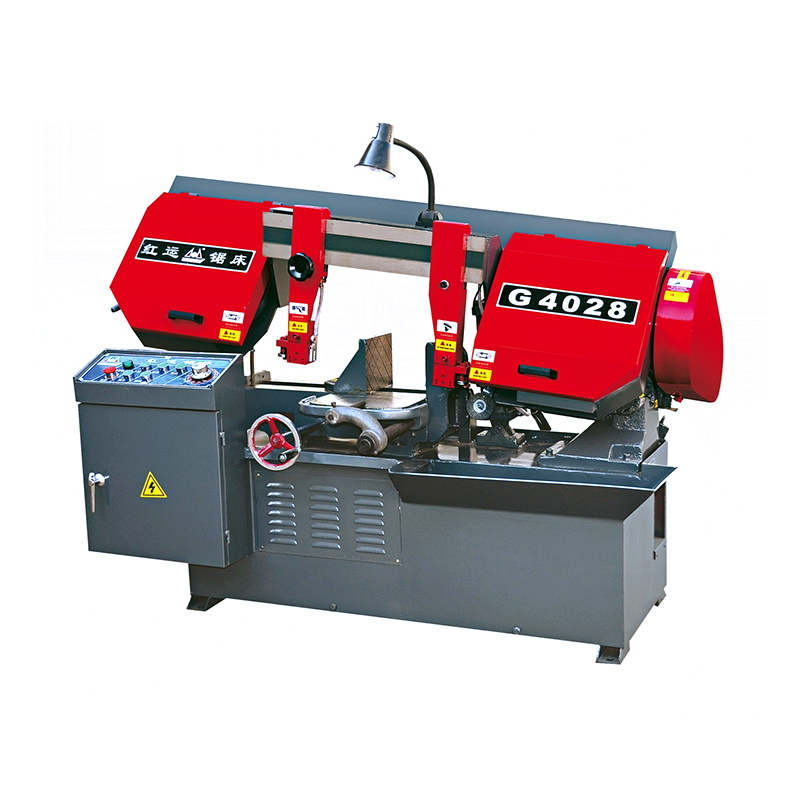Comparing Manual vs. Automatic Hacksaw Machines for Metal Cutting
In metalworking operations, choosing the right cutting equipment significantly impacts productivity and cut quality. Both manual and automatic hacksaw machines serve essential roles, with horizontal hacksaw machine and vertical hacksaw machine configurations offering distinct advantages for different applications. Understanding their differences helps shops select good equipment for their specific needs.

The traditional horizontal hacksaw machine remains popular in many maintenance shops and small fabrication facilities. These robust machines cut metal bars and pipes using a reciprocating blade motion parallel to the work surface. Their simple mechanical design makes them affordable and easy to maintain, though they typically require manual material clamping and feed adjustments. When processing long structural members, the horizontal hacksaw machine's stable cutting plane helps maintain straight cuts through thick cross-sections.
In contrast, modern vertical hacksaw machine models have gained popularity for space-constrained operations. Their compact footprint allows installation in tight workshop areas while still delivering precise cuts. The vertical orientation of a vertical hacksaw machine often makes material loading more ergonomic, particularly when working with plate stock or shorter cut lengths. Some operators prefer this configuration when frequently changing between different material types.
For operations requiring high-volume lumber processing, the vertical saw mill represents a specialized alternative. While primarily designed for wood, heavy-duty vertical saw mill configurations can handle certain composite materials and aluminum extrusions. Their continuous band blade operation differs significantly from the reciprocating action of hacksaw machines, offering faster cutting speeds for appropriate materials.
Automatic versions of both horizontal hacksaw machine and vertical hacksaw machine designs have transformed production environments. These systems incorporate programmable controls, automatic feed mechanisms, and sometimes even robotic part handling. An automatic horizontal hacksaw machine can process multiple identical cuts with minimal operator intervention, while a similarly equipped vertical hacksaw machine might excel at complex angled cuts in plate materials.
The cutting capacity differences between these machines remain noteworthy. A heavy-duty horizontal hacksaw machine typically handles larger diameter solid rounds and structural shapes more effectively, while a vertical hacksaw machine often provides better visibility and control for intricate profile cutting. Neither matches the continuous production capability of a vertical saw mill when processing compatible materials, though their metal-cutting precision remains outstanding.
Maintenance requirements also vary significantly. The mechanical simplicity of a manual horizontal hacksaw machine means fewer components that can fail, while automatic versions require more sophisticated upkeep. Vertical hacksaw machine designs, with their gravity-assisted cutting action, often demonstrate different wear patterns on blades and guides. The high-speed operation of a vertical saw mill demands particularly vigilant blade tension monitoring and regular bearing inspections.
Material versatility presents another key consideration. While both horizontal hacksaw machine and vertical hacksaw machine models cut various metals effectively, their performance differs by material type. The horizontal hacksaw machine generally maintains better blade life when cutting harder alloys, while the vertical hacksaw machine might produce cleaner cuts in thin-walled tubing. The vertical saw mill, while unmatched in wood processing, has limited application in metalworking beyond non-ferrous materials.
Safety features have evolved differently across these platforms. Modern automatic horizontal hacksaw machine models often include light curtains and automatic braking systems, while vertical hacksaw machine designs frequently incorporate improved chip containment. Vertical saw mill operations require particular attention to blade guarding due to their continuous motion cutting action.
The decision between manual and automatic operation depends largely on production volume. Low-volume shops may find a manual horizontal hacksaw machine greatly adequate, while high-production environments benefit from automatic vertical hacksaw machine systems with material handling automation. The vertical saw mill occupies a different niche entirely, serving operations requiring rapid processing of wood or wood-alternative materials.

 English
English 中文简体
中文简体 русский
русский

